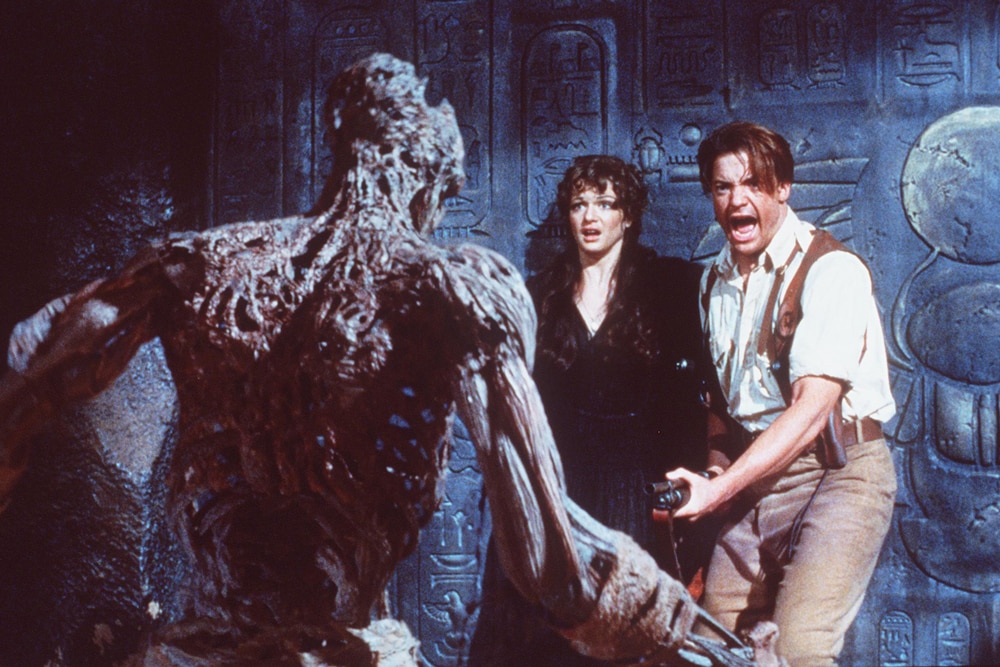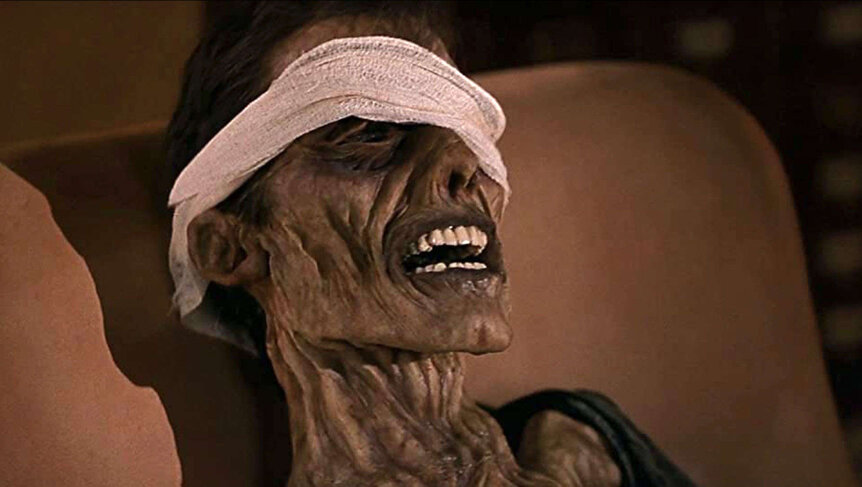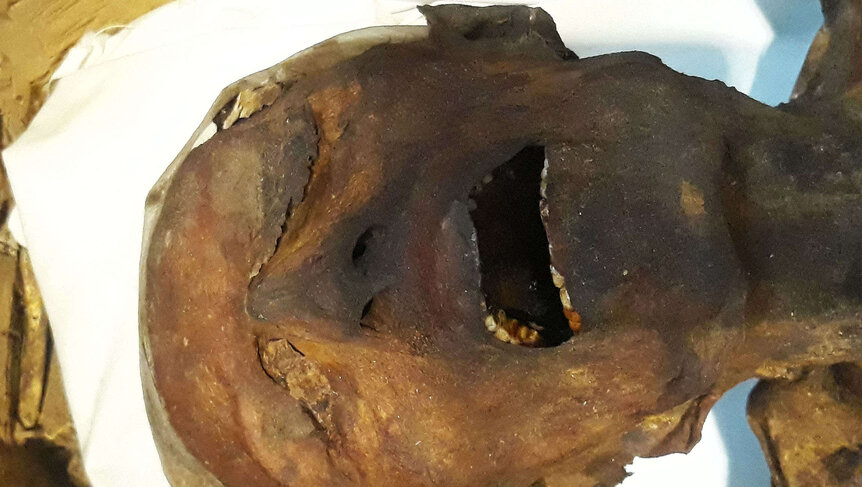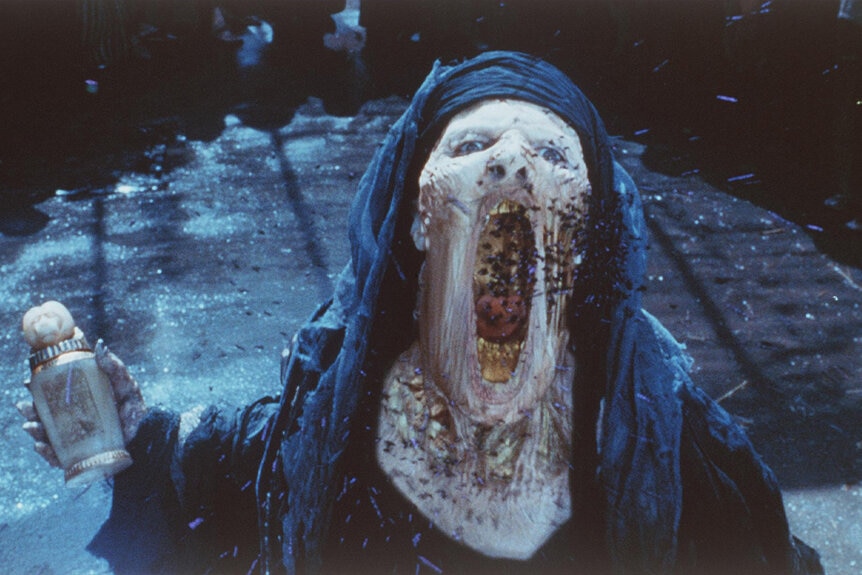Create a free profile to get unlimited access to exclusive videos, sweepstakes, and more!
How Mummies Get Made by People and the Environment
It's all about making the body of the deceased unappetizing.

The 1999 action adventure movie The Mummy (streaming now on Peacocks) takes viewers back to 1290 BC, in Egypt, where the high priest Imhotep is gambling on love, with death on the line. When Imhotep is discovered with his Anck-su-namun (the Pharoah’s mistress), the pair of them kill the Pharoah to cover their tracks. Imhotep runs and Anck-su-namun takes her own life, believing Imhotep would resurrect her. But before he has the chance, Imhotep is captured and buried alive with flesh-eating scarabs as punishment for his crime.
It's not the conventional method of mummification, but it does the job well enough to preserve Imhotep until he can be reawakened by a handful of misguided explorers. Candidly, Imhotep was looking pretty rough when he first emerged from his sarcophagus, and that’s because his executioners skipped a whole bunch of important mummification steps.
What Happens to Our Bodies After We Die?
To understand how mummification works, we first have to understand what happens to a body when it’s not mummified. As soon as biological equilibrium is lost (a person dies), the body begins to break down. Cells stay alive for a while, but they can’t dump acidic waste products into the circulatory system, so they build up. Eventually, the acid builds up enough to destroy cell membranes and the cells consume themselves. Those destroyed cells build up into pockets of nutrient-rich fluid, triggering a boom for decomposing microbes.
RELATED: Mummies From Stone Age Europe Tell More About the Afterlife of Prehistoric People
The first on the scene are our own microbes, the literal trillions of bacteria living on and inside of us get one final meal as they consume the body itself. Soon, other decomposers show up in the form of fungi, creepy crawlies, and other scavengers, to strip the body of its final tissues. This process happens over the course of weeks or months, depending on environmental conditions, leaving only the skeleton behind.
Eventually, over the course of a few years or decades, the bones break down too. Most of the people who have ever lived have disappeared entirely, their bodies returning to dust. Mummification endeavors to preserve the body by arresting the ordinary decomposition processes to keep the body at least somewhat intact.
How the Egyptians Mummified Their Dead
Cultures all over the world have mummified their dead in various ways, but the Egyptians are the most well-known. The process of mummification varied across cultures, but it also varied within Egyptian culture, depending on the time period and resources available. However, the type of mummification people usually think of when they think of ancient Egypt looked something like this.
First, some of the vital organs were removed. The lungs, stomach, liver, and intestines (all thought to be important in the afterlife) were separately embalmed and placed in canopic jars. Later on, canopic jars became symbolic, and the organs were instead individually wrapped and placed back inside the body. In either case, the heart was left untouched, considered to be the core of a person’s being. The brain, meanwhile, was discarded.
RELATED: Are Those Flesh-Eating Scarabs from The Mummy Real?
The body was then treated with a salt mixture called natron which occurs naturally in dry lake beds of the region. Embalmers would cover the body in natron for 40 days to pull out moisture and prevent decomposition. Next, the body’s interior was packed with linen, natron, herbs, and other materials.
Finally, the skin and the first several layers of wrapping were coated in a mixture of resins, many of which had antimicrobial properties. After final wrapping, the mummification process was complete and served to halt the normal processes which destroy the body.
Bog Bodies (and Other Natural Mummies)
Not only does intentional mummification predate ancient Egypt, but natural mummification predates anything humans were up to. The oldest known natural mummy, known as the Spirit Cave Mummy, was discovered inside a Nevada cave in 1940. It was wrapped only in a blanket and a mat made of reeds, but was naturally preserved by the dry dessert climate.
Initially, researchers believed the remains to be only a couple thousand years old, but newer dating techniques emerging in the ‘90s revealed the mummy to be 10,700 years old. The mummy remained in limbo for decades while its provenance and ownership were disputed. Finally, in 2016, genetic testing was carried out, confirming a cultural and genetic affiliation with the indigenous Fallon Paiute-Shoshone Tribe (who, importantly, had claimed affiliation and requested repatriation all along) and the Spirit Cave Mummy was rightfully returned.
RELATED: 1999's The Mummy Is a Perfect Action-Horror Mashup
The genetic data, when combined with a handful of other ancient mummies, helped to inform a better understanding of how ancestral humans traveled to and across the Americas. Of course, dry desert air isn’t the only way the planet occasionally preserves bodies. Perhaps its best method is a loose collection of peat bogs in cold environments.
Bogs produce some of the most stunningly preserved mummies ever discovered. A combination of acidic water, low temperatures, and lack of oxygen keeps soft tissues preserved while softening or destroying harder internal tissues.
As peat breaks down in the water, it releases humic acid and creates water with a pH similar to vinegar. Cold temperatures prevent bacteria from getting too busy before the acid can soak through the tissues. The acid dissolves calcium phosphate in the bones, softening or destroying them while preserving skin, hair, nails, and clothing. In essence, anything biological that slips inside is pickled forever. Or at least until it’s pulled out of the bog. Bog mummies break down quickly when exposed to air.
The trick to mummification, whether you’re doing it naturally or artificially, is to rob bacteria and other decomposers of the opportunity to chow down on a person’s remains by creating a hostile environment. Basically, you want to do whatever is the opposite of tossing someone into a box with dozens of flesh-eating bugs and sealing the lid. Poor Imhotep.
Catch The Mummy streaming right now on Peacock!





























